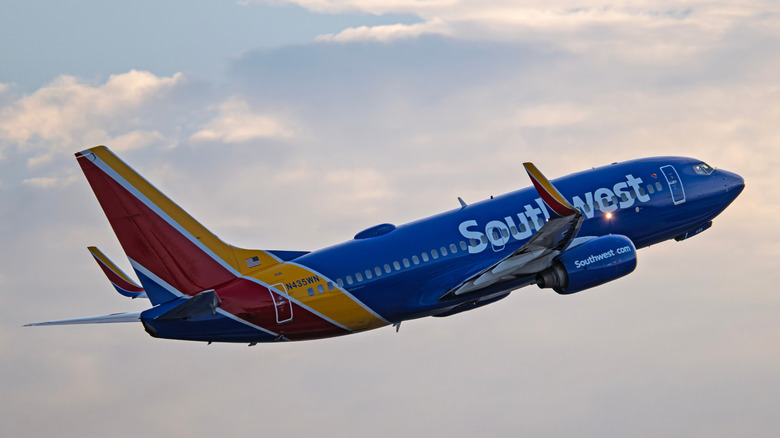How Much Fuel Does It Take For A Boeing 737 To Fly At Max Range?
It's no secret that the Boeing 737 is an incredibly popular variety of airliner. If you've flown anywhere in the world over the past few decades, you've likely sat in one. The line has been in production for almost 60 years, and it doesn't look like it's slowing down anytime soon. While the 737 might not have the range of much bigger jets like variants of the Airbus A350, it's no slouch when it comes to distance. All variations of the current 737 Max line have no issue going over hitting 3,100 nautical miles (3,567 miles).
The current long range king of the 737 line is the 737 Max 7 with a maximum range of 3,800 nautical miles (4,372 miles), meaning it can cross the continental United States without any issue, and still have some fuel left over. Speaking of fuel efficiency, it's worth asking how much fuel a passenger jet like the Max 7 burns during a long trip. At its maximum regular fuel capacity, the Max 7 can carry 6,820 gallons of gas; but that doesn't tell the full story of what the plane is capable of. Earlier 737s, however, can have a trick up their sleeve.
More fuel equals less cargo
All 737s can be fitted with auxiliary fuel tanks; up to nine of them. Fully loaded, the fuel capacity of the earlier generation 737-700 jumps to 10,707 gallons, and the range skyrockets to 5,775 nautical miles (6,645 miles). However, there are huge drawbacks to this configuration, which is why your average Southwest flight isn't going to have auxiliary fuel onboard. More fuel tanks means less room for cargo to a fairly dramatic degree.
If all nine fuel tanks were fitted, it would give the 737-700 a maximum cargo capacity of 165 cubic feet, down from 966 cubic feet without the fuel tanks. 165 cubic feet is only a little bit more than the storage capacity of a 2025 Chevy Suburban, which has room for 144.5 cubic feet of cargo.
Still, 6,820 gallons of gas in standard configuration is what you can expect from a current-generation 737 Max 7. Its efficiency comes from its CFM LEAP engines, which are a huge leap in efficiency from the previous generation of engines used on earlier 737s.

